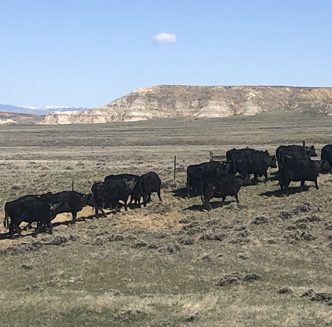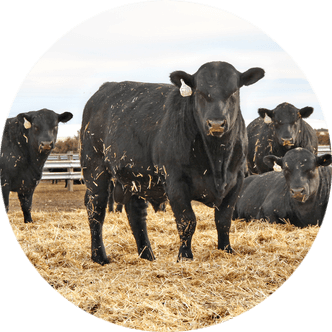USDA reorganization: Department to consolidate functions, relocate employees under new plan
On July 24, U.S. Secretary of Agriculture Brooke Rollins released plans for a major reorganization of the U.S. Department of Agriculture (USDA) aimed at optimizing functions and reducing departmental bloat at the national level.
The proposed reorganization would close down underutilized government buildings in the capital and relocate roughly one-half of the department’s Washington, D.C. workforce to five regional hubs across the nation.
According to Rollins, the reorganization is a direct result of the Trump administration’s pledge to deliver “real change in Washington” and an attempt at refocusing USDA on its founding mission of serving farmers, ranchers, landowners and rural communities while performing critical public services which benefit all Americans.
“American agriculture feeds, clothes and fuels this nation and the world, and it is long past time the department better serve the great and patriotic farmers, ranchers and producers we are mandated to support,” Rollins says.
“We will do so through a transparent and commonsense process to preserve USDA’s critical health and public safety services the American public relies on,” Rollins continues. “We will do right by the great American people who we serve and with respect to the thousands of hardworking USDA employees who so nobly serve their country.”
Realigning priorities
The USDA Department Reorganization Plan rests on four key pillars outlined in an official memorandum signed by Rollins.
According to Rollins, the plan will help return the USDA to its core mission of serving the nation through improved effectiveness, enhanced services, reduced bureaucracy and cost savings for the American people.
The first pillar focuses on ensuring the USDA workforce aligns with available financial resources.
According to the memorandum, the reorganization is a step in aligning workforce numbers with available finances by reducing unnecessary functions and eliminating repetitive positions.
USDA emphasizes certain public safety and national security roles including wildfire response, food safety inspection and emergency coordination will be unaffected.
The second pillar zeroes in on bringing USDA operations closer to the communities it serves by relocating the majority of its Washington, D.C. workforce to regional hubs. Relatedly, buildings which fail to meet mandated 60 percent occupancy rates will be vacated and repurposed on Capitol Hill.
The third and fourth pillars aim to promote coordination across USDA by consolidating redundant positions and phasing out several repetitive regional offices.
Relocating workforce
One of the most significant changes outlined in the reorganization involves relocating up to one-half of USDA’s National Capital Region (NCR)-based staff to five regional hubs – Raleigh, N.C.; Kansas City, Mo.; Indianapolis; Fort Collins, Colo. and Salt Lake City.
USDA says the hubs were chosen based on existing presence of USDA employees and cost-of-living considerations, emphasizing each hub is much closer to the majority of agricultural states than Washington, D.C.
Currently, USDA employs approximately 4,600 individuals within the NCR. The region has one of the highest costs of living in the nation, with a federal salary locality rate of 33.94 percent.
A July 24 press release from the USDA called the department’s presence in the NCR “underutilized and redundant, plagued by rampant overspending and decades of mismanagement and costly deferred maintenance.”
“Trump was elected to make real change in Washington, D.C. and we are doing this by moving our key services outside the beltway and into great American cities across the country,” Rollins says.
Although cost of living is lower, concerns have been raised about the locations of the proposed hubs, none of which fall within the nation’s top agricultural states of Nebraska, Iowa, California, Texas or Illinois.
Congressional response
The proposed reorganization has been met with mixed reactions.
Several members of Congress expressed disappointment at a lack of consultation before the plan was made public, including Senate Agriculture Chair John Boozman (R-AR) and Sen. Amy Klobuchar (D-MN) who called a hearing of the Senate Agriculture Committee to better understand the details of Rollins’ decision.
On July 30, Deputy Agriculture Secretary Stephen Vaden fielded questions from the Senate Agriculture Committee regarding the proposed reorganization.
Boozman oversaw the hearing, expressing support for the proposed reorganization while emphasizing operations should continue to prioritize the American people.
“I appreciate the secretary’s emphasis on improving effectiveness and accountability, enhancing services, reducing bureaucracy and cutting waste. I support these goals,” Boozman began in his opening address. “I share the secretary’s desire to ensure USDA operates efficiently, is a good steward of taxpayer dollars and meets the needs of agriculture and rural America.”
“We must also prioritize what matters most to producers and rural communities – responsiveness, service and results,” Boozman continued. “USDA is often the most visible face of the federal government in rural America. This presence, whether through Farm Service Agency offices, conservation staff or rural development programs, needs to be preserved and empowered.”
Klobuchar was first to speak, reprimanding the reorganization as “a half-baked plan with no notice” before expressing fears about the reorganization placing strain on an already reduced USDA workforce.
Klobuchar was not the only representative to express concern about employees not wanting to relocate, but Vaden remained optimistic, emphasizing the department is expecting a high retention rate.
Vaden stressed 90 percent of agency workers are already located in regions other than the nation’s capital, and only four of 94 research facilities would close under the reorganization.
He also noted the high cost of living in the NCR as a barrier to long-term careers with USDA and framed the proposed relocation as a remedy.
“We want people to come to USDA for a career, to start a family and to stay with us,” Vaden said, noting the cost-of-living in the proposed regional hubs would yield this result at a higher rate than keeping operations anchored to the NCR.
Lawmakers from both parties expressed approval of the idea of placing USDA employees closer to constituents and supporting efficient operations.
Throughout the hearing, Vaden maintained USDA’s commitment to the proposed reorganization. Vaden also emphasized the plan is just starting to take effect and is still subject to change.
Grace Skavdahl is the editor of the Wyoming Livestock Roundup. Send comments on this article to roundup@wylr.net.





